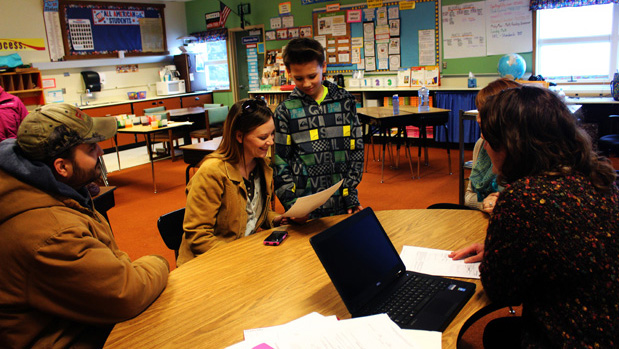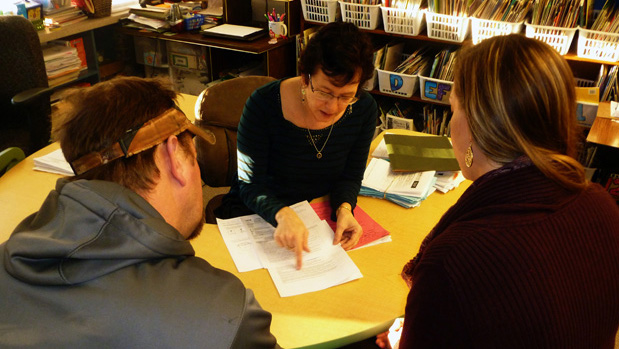Standards Referenced Reporting for K-6 students

Can you imagine having to bowl an entire game blindfolded? Imagine your surprise at the end of the game when you discovered your score! If you’d bowled before and were good at it under normal circumstances, you might hit at least half the pins. You might occasionally hear the pins fall, or hear someone call out, “Good job!” but without seeing the pins and where your ball hit last time, it would be difficult to know what to do differently next time to get closer to the goal of hitting all the pins at once. If you hadn’t ever been exposed to bowling before, you’d probably be lucky to keep the ball out of the gutter for most of your attempts!
School has been a lot like bowling blind
Children come to school, and starting at the end of third grade, take a test that tells them if they’re on track to be college and career ready by the time they leave twelfth grade. Sometimes that spring score is a total surprise, other times, it seems to make some sense. But since there’s no way to see how many pins the child hits each time he or she is up to bowl, the child can’t make adjustments in their efforts as the game progresses. Imagine how tiring that would become after doing that every day for five or six years. Would you have the perseverance to keep trying? What would help you keep trying? What might make you give up altogether?
Be clear on what success looks like
The standards that our teachers use to plan learning experiences allow their students to never have to bowl blindfolded. From the beginning of an instructional unit, both the teacher and the student can be clear on what success will look like. Before a child even rolls the ball, he or she understands what he or she is supposed to try to do. After a few tries, the student starts figuring out how to make adjustments so he or she can hit the right pins in the right way. With the help of a skilled coach or teacher, the student learns new strategies and refines his skills until—and with practice and good feedback—he or she can at last hit the pins he or she aims for.
Specific feedback, or an A or an F or…?

What if, instead of giving specific feedback about the angle and speed with which the student rolled the ball, the coach’s feedback consisted of grading each attempt? “Well, that ball went in the gutter, so it must be an F,” the coach might say. Or, “Wow—even though it keeps going in the gutter, you’ve had a great attitude and kept trying, so I’ll give you a C this time.” What about when a student was trying to pick up a split? On their last attempt of many, instead of sending it in the gutter or straight down the middle, the student picked up one side of the split, so the coach encouragingly shouted out, “That was great! You’ve gotten an A for the day!”
Become specific to excel
The standards in use by our students and teachers supports providing specific feedback about what a student is able to do already, what they don’t know at all, and what they need to improve in. For example, on a writing assignment rubric, a student might see that while her spelling was accurate and she used correct punctuation, she didn’t organize her ideas into cohesive paragraphs, or she didn’t provide any information that supported her opinion statement. This specific information helps her know what she does well and what she needs to work on, and it prevents her from mindlessly looking for spelling and punctuation errors when she really needs to focus on organizing her ideas into paragraphs and giving reasons or evidence that supports her opinion.
Motivation, effort, and success
To be able to see how close you are to being successful has a direct impact on effort and motivation. Reaching for success when you’re not clear what really constitutes success can be exhausting and frustrating. It’s our responsibility to help our students make good use of the limited time they have in school and help keep them motivated to learn and acquire new knowledge. Sending a child up to bowl with a blindfold on guarantees many children will fail by accident or stop trying out of frustration. It’s a good thing we’ve stopped blindfolding our students in public education!
Links
- KPBSD Department of Elementary Education
- Standards Referenced Reporting FAQs for Parents and Guardians
- Scoring Scales
- Informational Poster
- PowerSchool Tips for Parents
- Committee Membership, Meeting Information, and History
Thank you to Dr. Christine Ermold, KPBSD director of elementary education and professional development, for writing this article

